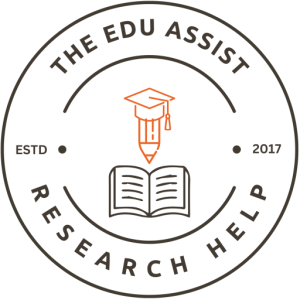Introduction
In an increasingly digital world, accessible online courses are more important than ever. Did you know that over 70% of students benefit from online learning environments that cater to diverse needs? Digital learning isn’t just about convenience it’s about creating environments that include everyone, regardless of ability.
This blog explores the key elements that contribute to the effectiveness of accessible online courses offered by TheEduAssist. With the growing demand for flexible and inclusive learning, institutions must adapt to meet diverse student needs. TheEduAssist training stands out by combining educational theory, innovative tools, and teaching excellence.
We’ll discuss the core principles of accessibility, the role of technology, and the instructional methods that enhance engagement each a pillar of successful course delivery.
Principles of Accessibility
Universal Design for Learning (UDL)
Universal Design for Learning (UDL) is a framework that supports all learners by offering multiple means of representation, engagement, and expression. In the context of accessible online courses, UDL ensures that materials and instruction are flexible and adaptable to each learner’s needs.
TheEduAssist training integrates UDL by designing modules that allow learners to choose how they interact with content be it through video, audio, or text. For example, a lesson on leadership may offer a podcast, an infographic, and a written guide, giving students the freedom to learn in the way that suits them best.
The benefit? Reduced learning barriers and improved outcomes. By embracing UDL, TheEduAssist ensures that learners with visual, auditory, or cognitive challenges can equally benefit.
Inclusivity in Course Content
Inclusivity is more than just accessible formats; it’s about representing diverse perspectives. Inclusive accessible online courses provide content that reflects the experiences, identities, and contributions of different communities.
TheEduAssist includes examples and case studies from a broad spectrum of cultural, social, and professional backgrounds. Course content often incorporates:
- Visual and textual content that is culturally sensitive
- Gender-neutral language
- Audio descriptions for visual content
- Captions for video content
These inclusive elements reflect TheEduAssist’s commitment to equitable education, ensuring no learner feels excluded.
Technological Tools and Features
Learning Management Systems (LMS)
At the heart of TheEduAssist training is its robust Learning Management System (LMS). The platform’s architecture is built for usability and accessibility. With:
- Keyboard-navigable interfaces
- High contrast visual options
- Resizable fonts
- Screen reader compatibility
The LMS is a key enabler for accessible online courses. Its mobile compatibility ensures that learners can access content on any device, promoting flexibility for working professionals or students in remote areas.
Additionally, TheEduAssist LMS includes real-time notifications, progress tracking, and personalized dashboards. These features enhance both engagement and efficiency in learning.
Assistive Technologies
Assistive technology tools are essential in removing learning barriers. TheEduAssist training supports a range of such tools, including:
- Screen readers for visually impaired students
- Speech-to-text software for learners with motor impairments
- Closed captioning and transcripts for all audio-visual materials
These tools don’t just serve learners with disabilities; they help everyone. For instance, captions can aid non-native English speakers or students in noisy environments.
Case studies from TheEduAssist show measurable improvements in retention and satisfaction among students using assistive tech. One learner shared, “TheEduAssist’s captioned lectures made learning easier during my long daily commutes.”
Pedagogical Strategies for Engagement
Interactive Learning Techniques
Engagement is crucial for learning success. TheEduAssist training incorporates interactive elements that make learning participatory and enjoyable. Examples include:
- Gamification: points, badges, and leaderboards
- Real-time quizzes and polls
- Group projects in discussion forums or breakout rooms
These strategies have shown to increase student satisfaction and retention. Learners are more likely to complete courses when they feel involved. By blending these strategies with UDL principles, TheEduAssist elevates the learning experience beyond passive content consumption.
Continuous Feedback Mechanisms
Feedback is not just evaluative it’s instructive. Regular assessments help learners track their progress and make improvements. In accessible online courses, feedback needs to be timely, specific, and constructive.
TheEduAssist uses:
- Automated quizzes with instant feedback
- Peer-review systems
- Instructor comments via text, audio, or video
These systems ensure learners understand where they stand and what to do next. The platform’s use of analytics also helps instructors identify struggling students and provide targeted support.
Conclusion
Accessible education is not a luxury it’s a necessity. Through thoughtful implementation of UDL, inclusive content, cutting-edge technology, and pedagogical best practices, TheEduAssist training delivers truly accessible online courses.
As we step into a future dominated by digital learning, the need for inclusivity and accessibility will only grow. TheEduAssist is ahead of the curve, setting a high standard for others to follow.
By focusing on student-centred design, technological adaptability, and responsive instruction, TheEduAssist proves that accessibility leads to better educational outcomes for all learners.

